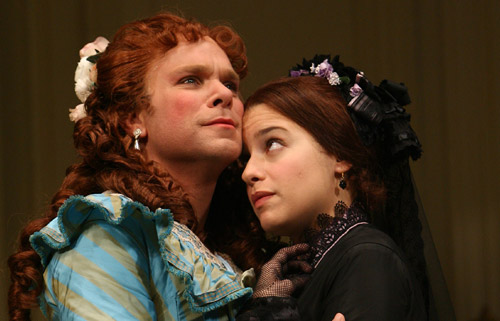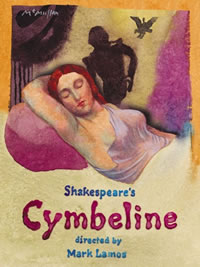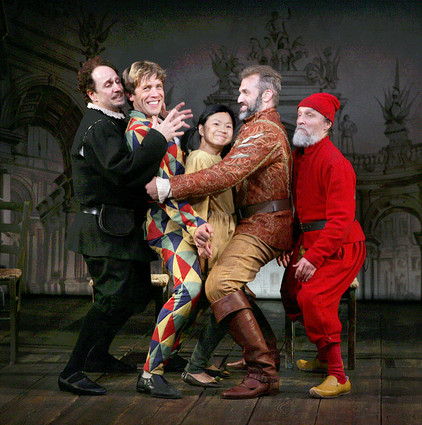Earlier this week Terry asked OGIC and me to put together lists of ten films released since the fall of 2005 for he and Mrs. Teachout to watch. The one caveat: “No spinach, please: I’m out for pleasure, very broadly construed, so don’t send me to anything I ‘ought’ to see (whatever that means) unless it’s also something that you loved.”
It has been fun to deliberate; and I’ve tried to be true to the no-spinach rule (“In times of crisis, we must all decide again and again whom we love.”). Here are my first five, listed in no particular order, with the rest to follow next week. I note with some chagrin that Harold and Kumar Go To White Castle came out a year too early to make the 2005 cutoff, otherwise it would have a spot here. Which is a roundabout way of saying that I think you should see it too, if you haven’t already.
1. Casino Royale: I’m a big Bond fan, so this movie was a great treat — and a relief after the franchise’s sad last installments, which were like watching video games. Lots of explosions, no feeling. This one seemed to return Bond to the physical realm. A lot of this is thanks to Daniel Craig, who plays the role rougher and with a lower center of gravity than anyone since Connery. Early on there’s a fantastic chase sequence on foot — showcasing freerunning star Sébastien Foucan — that’s so witty and exhilarating that I went back to see the movie twice. So much fun. And j’aime Eva Green.
2. Inside Man: A fresh, intelligent thriller that uses New York the way Collateral used L.A. Its bank robbery plot doesn’t quite hang together but I love this movie for the life in it: There’s a lot of delight in it for how everyday people talk and act. Plus, it’s beautifully shot. The bit where a woman brought in to translate negotiates to get her parking tickets fixed is one of my favorite film scenes of recent years: I wish more movies used their bit characters so well and shined so much around the edges.
3. Pan’s Labyrinth: Gorgeously conceived and wrought. I had to hide out for portions of it, though: It’ll wring you out.
4. Serenity: Joss Whedon presents Cowboys In Space! Rethinks and improves on the Firefly TV series. The script’s a little klunky with exposition in places but it’s a nice little ride all the same.
5. The Devil Wears Prada: I liked this comedy: It’s bitchy and tart, and there are some lovely clothes to look at (which I know matters a great deal to you, Terry). I also find it amusing to think of this film as a sort of Her Girl Friday, with Streep in the Cary Grant role. Lately, so many love stories on screen seem so neutered — all hugs and sweaters and understanding gazes (it’s like the heroines aren’t searching for love so much as a good therapist) — it’s nice to see a romance with some pepper even if it’s not, strictly speaking, a romance.
Archives for December 2007
CAAF: The second message was “Oh! My love to yo.”
So, I was late to get a cell phone and I still don’t really get texting or my phone’s other features. Once in a while the phone will make a crazy tweet and I’ll find a message on the screen, which I’ll read and then phone or email the sender back.
Just now the phone made its crazy tweet and there was a message saying, “Fwd: We are at the hospital.” I didn’t recognize the number but managed to tap out my first-ever text message: “Sorry Wrong number.” And then the phone tweeted again with the message: “Dear Dumbass: One of your dearest friends is currently in labor. Love, her husband.”
Actually, that’s not what he typed. But he should have.
TT: Mark Twain tonight (sort of)
Things have calmed down–somewhat–on Broadway, so my Wall Street Journal drama column covers only two plays this week, Mark Twain’s Is He Dead? and Mark Lamos’ Lincoln Center Theater production of Cymbeline. Here’s a preview.
* * *
 “Is He Dead?” is a farce about the art world that vanished into the author’s files and didn’t reappear until it was discovered in 2001 by a scholar and optioned by a producer. Six years later, it has opened in a ritzy production directed by Michael Blakemore (“Noises Off”) and starring Norbert Leo Butz (“Dirty Rotten Scoundrels”). The results are shriekingly funny–I don’t know when I’ve heard a New York audience laugh louder or longer–in large part because of Mr. Butz, whose performance is a veritable masterpiece of mugging.
“Is He Dead?” is a farce about the art world that vanished into the author’s files and didn’t reappear until it was discovered in 2001 by a scholar and optioned by a producer. Six years later, it has opened in a ritzy production directed by Michael Blakemore (“Noises Off”) and starring Norbert Leo Butz (“Dirty Rotten Scoundrels”). The results are shriekingly funny–I don’t know when I’ve heard a New York audience laugh louder or longer–in large part because of Mr. Butz, whose performance is a veritable masterpiece of mugging.
Don’t be fooled by the flackery, though: “Is He Dead?” may be “by” Twain, but it’s a quaintly amateurish piece of work that wouldn’t have run for ten minutes on Broadway had David Ives not “adapted” the script to within an inch of its life. The author of “All in the Timing” and “Mere Mortals,” is one of this country’s smartest comic playwrights, and a line-by-line comparison between the published version of “Is He Dead?” and the one currently being performed at the Lyceum Theatre is the equivalent of a postgraduate course in How to Make Large Numbers of People Guffaw. Mr. Ives has retained Twain’s original situations, most of his characters and a fair number of his lines, but he has cut, rearranged, punched up and otherwise transformed them so extensively as to deserve credit not as the play’s adapter but as its co-author….
 “Cymbeline,” which Shakespeare wrote toward the end of his life, is an imaginative retrospective in which he simultaneously deployed all of the time-honored devices that drove his plots: the weak king, the spunky heroine who dresses up as a boy, the misguided husband induced by a scoundrel to test his wife’s love. George Bernard Shaw called it “stagey trash of the lowest melodramatic order,” and though that was mere envy speaking, there have been plenty of other equally knowledgeable commentators who failed to grasp what Shakespeare was up to. Henry James dismissed “Cymbeline” as “a florid fairy-tale, of a construction so loose and unpropped that it can scarce be said to stand upright at all,” and it’s true that most productions fail to weave the play’s variegated strands into a convincing fabric.
“Cymbeline,” which Shakespeare wrote toward the end of his life, is an imaginative retrospective in which he simultaneously deployed all of the time-honored devices that drove his plots: the weak king, the spunky heroine who dresses up as a boy, the misguided husband induced by a scoundrel to test his wife’s love. George Bernard Shaw called it “stagey trash of the lowest melodramatic order,” and though that was mere envy speaking, there have been plenty of other equally knowledgeable commentators who failed to grasp what Shakespeare was up to. Henry James dismissed “Cymbeline” as “a florid fairy-tale, of a construction so loose and unpropped that it can scarce be said to stand upright at all,” and it’s true that most productions fail to weave the play’s variegated strands into a convincing fabric.
Not so this one. Greatly aided by Michael Yeargan’s sumptuously simple sets, Jess Goldstein’s gorgeous costumes and Mel Marvin’s savory incidental music, Mr. Lamos takes a cue from his parallel career as an opera director and gives us a “Cymbeline” that flows with the irresistible forward momentum of a piece of music. Resplendent pageantry, knockabout comedy, haunting lyricism: All are blended in just proportion, sweeping us toward a climax in which surprise after surprise is detonated like an extra-long string of firecrackers….
* * *
To read the whole thing, go here.
UPDATE: I took Maud with me to see Is He Dead? To find out what she thought of it, go here.
TT: Almanac
“It is the will of God that we must have critics, and missionaries, and Congressmen, and humorists, and we must bear the burden. Meantime, I seem to have been drifting into criticism myself. But that is nothing. At the worst, criticism is nothing more than a crime, and I am not unused to that.”
Samuel Clemens, Mark Twain’s Own Autobiography
TT: In living color
Here’s my latest videoblog, produced by The Horizon, Commentary‘s artblog. In it I talk about the New York Philharmonic’s planned visit to North Korea (about which I wrote here) and “The Cult of the Difficult,” an essay about modernism that appears in the December issue of Commentary. I also pay a visit to a New York art gallery, Knoedler & Company, and discuss their exhibition of the late paintings of Jules Olitski. (Yes, that’s Mrs. T who makes a cameo appearance at the end.)
Enjoy.
CAAF: 5 x 5 Books by Writers that I’ve Tilted a Few Around by Matthew Eck
5 x 5 Books … is a recommendation of five books that appears regularly in this space. This week’s installment comes from Matthew Eck, whose novel The Farther Shore is the Lit Blog Co-op’s Read This! Selection for winter. In a review for Salon, Stephen Elliott described Eck’s book as “a truly great war novel by a writer of sizable talent who has come close to war.” Keep up with the LBC discussion of the novel going on this week here.
It’s that time of the year where we like to get depressed and we like to drink. We visit family and friends — and pets are left alone for days on end with too little water. In the title I use the word “around” because not all the writers on this list drink. I use the word “few” because I’ve already embarrassed myself enough out there in the world. But never apologize — even as you knock over the Christmas tree.
I’m not saying that writers have to drink either, don’t get me wrong there. I never drink anything but coffee when I’m writing. Don’t dull your senses. Don’t introduce bad habits into your writing time.
I think I really chose these books because I must have somehow gotten a little depressed around all these writers at one point. But it’s that little bit of depression I carried back to the beauty of their books, their work heavy with loss.
1. The Last Good Kiss by James Crumley. This is one of those novels where I’ll let the writing speak for itself. It has one of the greatest first lines in all of literature: “When I finally caught up with Abraham Trahearne, he was drinking beer with an alcoholic bulldog named Fireball Roberts in a ramshackle joint just outside of Sonoma, California, drinking the heart right out of a fine spring afternoon.”
The writing in the book is unbearably beautiful. Case in point, later in the book:
Behind her, the clouds surrendered their last crimson streaks to a soft, foggy gray. A single tall evergreen tilted against the falling sky. Behind me, the party began to rumble like thunder. Peggy relit the hash pipe, and this time I accepted it from her. We shared the smoke as the evening winds rose off the cold sea, rose up the wooded ridges, and herded the party inside, people muttering thin complaints like children called from play to the fuzzy dreams of the their early beds.
2. Thumbsucker by Walter Kirn. If you’ve ever wanted to be loved, read this book. And this next sentence has nothing to do with what I just said: Kirn has written some of the finest scenes about Mormon sex, in case that’s what you’re looking to give, or get, for Christmas. This is one of the few books that made me laugh until I cried — and not because it’s all funny.
3. A Stranger In This World by Kevin Canty. This is one of the few books that made me cry until I needed to laugh. I love to teach “Dogs” and “Pretty Judy.” Besides, the man turned me on to Babel. I’ll love him forever for that one.
4. The End of the Story by Lydia Davis. I do not know Lydia Davis — let me make that clear. But I once sat in a room where fifteen or twenty MFA-ers were trying to talk to her. Okay, so I wasn’t sitting, I was trying as well. I love this book for the way memory tumbles against memory. I love the “nothing” it offers.
5. Tom Thomson In Purgatory by Troy Jollimore. One of the notes I scribbled in the margins of this book reads, “Did you ever get laid on Christmas?” It’s not a note to Tom Thomson either. It was fodder for the friend I gave the book to. This is a book you’ll have to buy for someone else because it’ll say so much to you.
TT: Happy anniversaries
 I got out of the hospital two years ago today. I didn’t say so in this space at the time, but it was the woman now known as Mrs. T who escorted me home that afternoon. We’d met at a dinner in Baltimore a month or so before, and promptly made plans to see a play in New York (Waiting for Godot, believe it or not) on what ended up being the day after I called an ambulance for myself. Instead she came to visit me at Lenox Hill Hospital, and twenty-two months later we said I do in front of a boatful of astonished and delighted onlookers. Now she’s in Smalltown, U.S.A., taking care of my mother. For some mysterious reason, Hilary seems to enjoy taking care of Teachouts.
I got out of the hospital two years ago today. I didn’t say so in this space at the time, but it was the woman now known as Mrs. T who escorted me home that afternoon. We’d met at a dinner in Baltimore a month or so before, and promptly made plans to see a play in New York (Waiting for Godot, believe it or not) on what ended up being the day after I called an ambulance for myself. Instead she came to visit me at Lenox Hill Hospital, and twenty-two months later we said I do in front of a boatful of astonished and delighted onlookers. Now she’s in Smalltown, U.S.A., taking care of my mother. For some mysterious reason, Hilary seems to enjoy taking care of Teachouts.
I wish I were there, and a week from now I will be, but for the moment I still have shows to see and pieces to write. That’s why I posted this picture today: I wanted you to see what I’m missing!
It’s good to be alive.
TT: So you want to see a show?
Here’s my list of recommended Broadway, off-Broadway, and out-of-town shows, updated weekly. In all cases, I gave these shows favorable reviews in The Wall Street Journal when they opened. For more information, click on the title.
Warning: Broadway shows marked with an asterisk were sold out, or nearly so, last week.
Because of the recently settled stagehands’ strike, many Broadway shows are offering heavily discounted tickets to certain performances. For information, go here.
BROADWAY:
 • August: Osage County (drama, R, adult subject matter, closes Mar. 9, reviewed here)
• August: Osage County (drama, R, adult subject matter, closes Mar. 9, reviewed here)
• Avenue Q (musical, R, adult subject matter and one show-stopping scene of puppet-on-puppet sex, reviewed here)
• A Chorus Line (musical, PG-13/R, adult subject matter, reviewed here)
• The Drowsy Chaperone (musical, G/PG-13, mild sexual content and a profusion of double entendres, reviewed here)
• The Farnsworth Invention (drama, PG-13, reviewed here)
• Grease * (musical, PG-13, some sexual content, reviewed here)
• Rock ‘n’ Roll * (drama, PG-13, way too complicated for kids, reviewed here)
• The Seafarer (drama, PG-13, adult subject matter, reviewed here)
• The 25th Annual Putnam County Spelling Bee (musical, PG-13, mostly family-friendly but contains a smattering of strong language and a production number about an unwanted erection, closes Jan. 20, reviewed here)
OFF BROADWAY:
• The Fantasticks (musical, G, suitable for children old enough to enjoy a love story, reviewed here)
 • The Glorious Ones (musical, R, extremely bawdy, closes Jan. 6, reviewed here)
• The Glorious Ones (musical, R, extremely bawdy, closes Jan. 6, reviewed here)
MILLBURN, N.J.:
• Meet Me in St. Louis (musical, G, completely family-friendly, closes Sunday, reviewed here)
CLOSING SOON
IN NEW YORK:
• Pygmalion * (comedy, G, suitable for mature and intelligent young people, closes Dec. 16, reviewed here)
• Things We Want (drama, R, adult subject matter, closes Dec. 30, reviewed here)
• West Bank, UK (musical, R, adult subject matter, closes Sunday, reviewed here)
